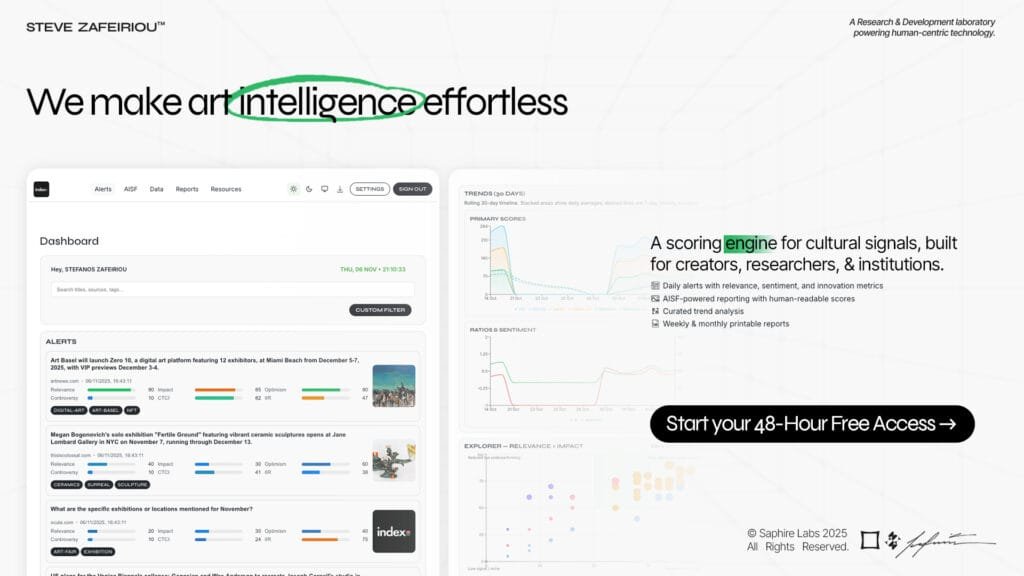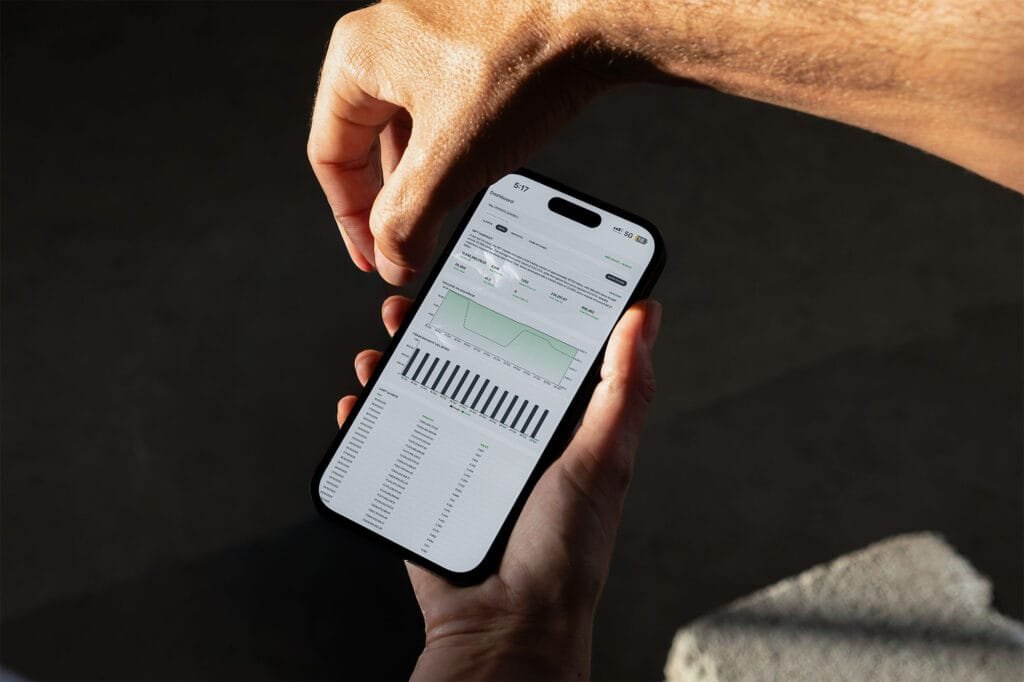Table of Contents Show
The intersection of natural language processing (NLP) and art criticism is rapidly evolving, offering new frameworks for interpreting artworks, curatorial texts and public discourse.
As AI art criticism and machine learning art analysis gain traction, longstanding questions about meaning, aesthetics and human insight are being revisited.
This article explores how NLP methods such as sentiment analysis in art, named entity recognition and language generation are reshaping how critics, museums and scholars engage with art in 2025.

What is Natural Language Processing (NLP)?
Natural language processing (NLP) is a sub-field of artificial intelligence concerned with the interaction between computers and human languages encompassing tasks such as tokenisation (breaking text into meaningful units), named entity recognition and sentiment analysis.
For decades associated with computational linguistics, in recent years NLP has been bolstered by transformer architectures and large language models (Zhang, 2023).
Unlike traditional rule-based computational linguistics, modern NLP emphasises statistical learning from large corpora, enabling machines to classify, generate and summarise human language at scale.
In sectors ranging from finance to healthcare, NLP is already deployed for topic detection and trend forecasting.
The methodologies include token-level analysis, embeddings (numeric vector representations of words) and generative models.
When applied to the arts, NLP offers a novel lens through which to analyse critical discourse, curatorial narratives and public commentary forming a bridge between computational art studies and humanistic inquiry.

The Role of NLP in Art Criticism
In the domain of art criticism, NLP tools enable the systematic-scale analysis of reviews, essays and exhibition texts.
By parsing large volumes of textual data, such methods can identify patterns in critical tone, style, and the invocation of cultural context.
For example, topic modelling techniques can cluster themes in curatorial texts, while sentiment algorithms can flag shifts in critical reception of particular art movements.
One practical example involves the use of NLP to evaluate user reviews for art places (points of interest) in Singapore and Hong Kong:
The study processed public comments with NLP to reveal user perspectives on exhibitions and cultural sites (Zeng et al., 2024).
Moreover, in the article “Natural Language Processing in Arts Management,” Cieliebak et al. (2019) detail how techniques such as author profiling and trend detection assist arts managers and scholars in mapping discourse dynamics.
Through such methods, subjective impressions of art become amenable to quantitative processing while at the same time raising questions about how much of interpretation can be captured by data-driven systems.

Quantifying Subjectivity and Cultural Context
Although art criticism is traditionally qualitative, NLP enables the creation of structured datasets:
For instance, sentiment polarity scores for reviews, thematic tags for critical vocabulary, or network graphs of referenced artists, movements and institutions.
These allow researchers to trace, for example, how the term “post-colonial” appears in relation to emerging artists, or how emotional tone in reviews evolves around major biennales.
Yet, the reduction of critical nuance into numerical form remains contested, particularly in the context of aesthetic judgement and cultural difference.

AI Powered Art Review Generation
A more disruptive use of NLP concerns the generation of art critiques via AI.
Generative language models (such as those in the GPT family) can be prompted to write interpretive texts about artworks, exhibitions or movements raising the prospect of automated art reviews and commentary.
In a recent study titled “Assessing LLMs in Art Contexts:
In “Critique Generation and Theory of Mind Evaluation,” the authors found that large language models, when carefully guided, were able to produce plausible art critiques, and in many cases human subjects struggled to distinguish the AI generated texts from human ones (Li et al., 2025).
Such developments intensify debate around authorship, originality and the human role in art criticism.
On the one hand, AI generated criticism may augment human reviewers; on the other hand, there is the risk of flattening interpretive diversity or privileging the dominant cultural lexicon encoded in training data.
Ready to turn ideas into professional art text?
Try the free Art-Context Copywriter prompt now and get draft ready statements, labels, and PR in minutes.
Human vs. Machine Interpretations
Comparative studies highlight that while machines can mimic stylistic features of critiques such as referencing composition, colour, museological context they often struggle with deeper cultural resonance, metaphorical subtlety or moral reflection.
The output remains contingent on prompts and training data, and lacks the situated experience of a human critic.
These observations suggest a hybrid approach:
The collaboration of human insight with machine assistance rather than full automation.
Sentiment Analysis in Artistic Interpretation
Sentiment analysis, a standard NLP technique, detects emotional valence (positive, negative, neutral) and nuance (e.g., “excited”, “melancholic”) in textual datasets.
In art criticism contexts, this technique is deployed to map audience response, critic tone and public perception of artworks or exhibitions.
For instance, by analysing social media discussion around contemporary art fairs, institutions may trace how sentiment shifts around particular artists or trends, thereby informing curation or marketing strategies.

The intersection of sentiment analysis in art with digital humanities offers a new perspective on reception history.
At the same time, algorithmic sentiment detection raises concerns about interpretive bias:
Many sentiment models are trained on general purpose information and may misinterpret domain specific language such as critical irony, metaphor or institutional jargon.
Transparent reporting of such limitations is essential.
NLP in Museum and Gallery Curation
Beyond criticism, NLP is increasingly influential in museum and gallery workflows.
NLP is used to classify and tag artworks by theme, style or artist using textual metadata; generate multilingual exhibit narratives; and enhance visitor engagement through interactive AI driven textual experiences.
Institutions experimenting with these tools employ language based tools to improve accessibility (for example, automating translations of curatorial texts) and to surface connections between disparate works in a collection via semantic analysis.
As noted in the arts management literature (Cieliebak et al. 2019), the potential of NLP for trend detection and visitor commentary analysis is emerging.
Such implementations help institutions manage vast digital collections, support multilingual audiences, and surface latent associations across artworks that might not be obvious via traditional cataloguing.

Challenges and Ethical Questions
The application of NLP in art criticism and curation presents significant challenges.
First, the question remains:
Can machines truly interpret art meaningfully?
Critics argue that reducing art to data and sentiment scores risks stripping nuance, context and human intentionality.
Second, there is the risk of bias:
Training datasets for NLP models often reflect Western, English language, canonical art historical sources, thereby marginalising non Western perspectives and languages.
Third, the human voice in criticism may be overshadowed if AI generated texts begin to dominate.
Maintaining the balance between machine assistance and human insight is imperative.
Legal and ethical issues also arise around authorship, attribution and authenticity especially when AI is used for “automated art interpretation”.
While formal legal advice is beyond scope, practitioners should remain conscious of these concerns and institution specific policies.
Future of NLP in Art Criticism and Curation
Looking ahead, several emerging trends suggest how NLP may further transform the field.
One key development is multimodal AI models that combine language and vision, allowing for sight and text analysis of artworks.
A 2025 study on “large language models for automating art analysis” anticipates that such systems will decode composition, style, and technique alongside textual interpretation (Khadangi et al., 2025).
Another trend is the rise of hybrid art critics: human practitioners supported by AI tools, enabling new forms of co-creation and critique.
This dynamic could democratise art criticism globally, allowing more voices from varied regions and languages to participate.
By 2030, the integration of AI and human creativity in art discourse may reshape institutional practices, publication models and curatorial frameworks, though the exact trajectory remains uncertain and subject to research, culture and policy.

Conclusion
Natural language processing is not replacing the art critic rather, it is redefining what art criticism can be.
As algorithms learn to read between the lines of tone, metaphor and cultural reference, the collaboration between human insight and machine intelligence opens up new possibilities for understanding creativity and meaning.
In a world where AI art criticism, automated art review and text mining in art criticism gain traction, the next time a review registers as “generated”, the question becomes:
Could an algorithm have helped write it?
The answer may prove more nuanced than expected.
Try the free Art-Context Copywriter prompt to draft statements, labels, and PR releases and review AI in action.
Frequently Asked Questions (FAQ)
What is the main benefit of NLP in art criticism?
NLP enables systematic scaling of text-based analysis allowing critics and scholars to detect patterns of discourse, sentiment or thematic association across large volumes of criticism or public commentary.
Can machine generated art criticism be trusted?
While generative models can produce stylistically plausible critiques, their interpretation of cultural nuance, metaphor and intention remains limited; thus, they are best used as tools augmenting; rather than replacing human criticism
What are the major risks of applying NLP in a museum context?
Key risks include bias, loss of human interpretive voice, oversimplification of aesthetic judgement and the possibility that machine generated labels or narratives may misrepresent artworks or audiences.
Limitations: Reliable quantitative data on how many art institutions currently deploy NLP for criticism or curation remain limited as of November 2025; estimates vary between pilot projects and fully scaled implementation.









